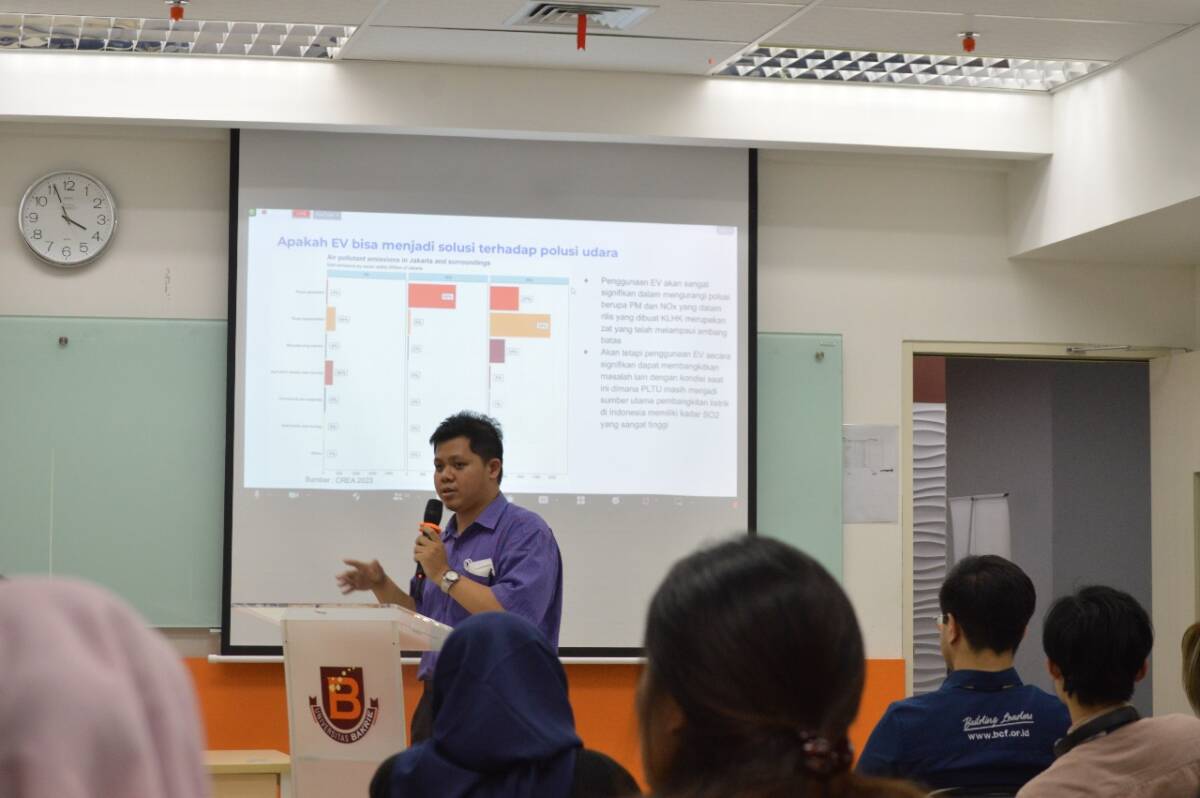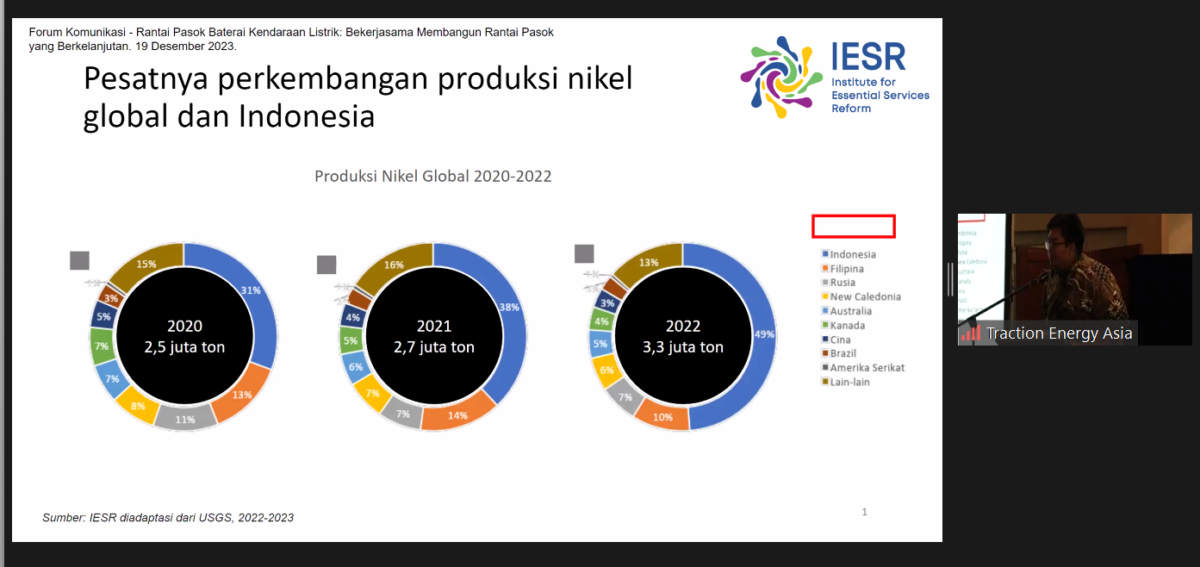Norway has successfully become a country that builds an electric vehicle ecosystem . Indonesia, which is currently enthusiastic about electric vehicles, can adopt the methods implemented by one of the Scandinavian countries. Read more on Kompas Tv.

Jakarta, November 25, 2024 - Over the past year, Jakarta's air quality has been in the spotlight, especially with the spike in pollution that has a major impact on public health. Executive Director of the Institute for Essential Services Reform (IESR), Fabby Tumiwa, mentioned that air pollution is a “silent killer” that contributes to many…
The euphoria of electric vehicles (EVs) is becoming increasingly difficult to contain. The claim that EVs are more environmentally friendly and have economic advantages over conventional vehicles is an attraction and magnet for customers. Read more on Kata Data.
The beginning of the construction of material factories for electric vehicle batteries in various provinces is claimed to be the start of the electric vehicle ecosystem in Indonesia. This was conveyed by President Joko Widodo when inaugurating a lithium battery anode factory owned by PT Indonesia BTR New Energi in Kendal, Central Java.
Read more on…
For several years, Thailand has been ahead of Indonesia in terms of export value and automotive or car manufacturing. But when we talking about electric vehicles (EVs), nature favors Indonesia. This is because the country has abundant reserves of nickel, one of the most important
one of the critical components for EV battery manufacturing.
Read more on…

The transport sector, with its extensive emissions, significantly contributes to the energy sector. In 2022, Indonesia's transport sector emitted 150 MtCO2, with the road transport sector contributing 90% (IETO, 2023 ). To delve deeper, 70% of emissions are from road passengers, and 20% from road freight. Decarbonizing the transport sector is a complex task that…

Jakarta, June 7, 2024 - The Government should take more robust measures to promote the reduction of carbon emissions in the land transportation sector. Transportation is one of Indonesia's significant greenhouse gas (GHG) emissions sources. This was revealed by Faris Adnan Padhilah, Research Coordinator of the Energy Demand Management Section, Institute for Essential Services Reform…
The war between Iran and Israel has added to the list of geopolitical conflicts that have an impact on world oil prices. For Indonesia as an oil and petroleum products importing country, the effect is very significant. People must be anxious when there is a rumor of a fuel price hike, because it will automatically…
Interest, trust and high prices are still obstacles to the electric vehicle program in Indonesia. This was conveyed by the Executive Director of the Institute for Essential Service Reform Fabby Tumiwa.
Read more on RRI.

Jakarta, December 19, 2023 - In recent years, energy transition has become a significant focus in various countries, including Indonesia. President Joko Widodo's (Jokowi) has been promoting the shift from conventional energy sources to renewable energy. One of the strategic steps emphasized is the development of electric vehicles. This support is realized through various incentives,…

Jakarta, December 15, 2023 - The Institute for Essential Services Reform (IESR) assesses that the energy transition is already in full swing in 2023, and it is ready to take off if the government can create the necessary supporting conditions.
IESR comprehensively discusses the development of the energy transition and opportunities to accelerate the energy…
The target of using 15 million electric vehicles by 2050 is predicted not to be achieved. Incentives for electric vehicles are considered still small so that it does not attract people to use electric vehicles.
Read more on Kata Data.
